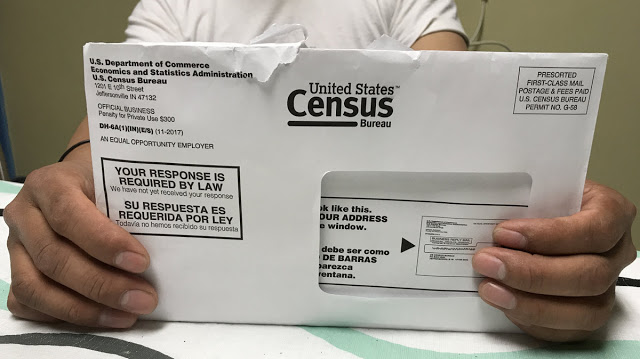
By Ed Diokno
The US Census recognizes that the Asian American and Pacific Islander communities will be hard to count because of language difficulties and the large number of first-generation immigrants, estimated to be at least two-thirds of the over 22 million AAPI in the US.
The Census is being conducted this spring and summer in accordance with a constitutional mandate that a headcount take place in the country every ten years. People will receive notice in the mail to respond to the tally online starting today to April 1. Those with no online access will be visited by a Census worker beginning in April.
Due to immigration, the AAPI population is the fastest growing demographic in the US. The Census Bureau’s research has also shown that Asian Americans are the racial group least familiar with and most reluctant to participate in the Census.
In some Asian countries, the concept of a census is foreign. Immigrants from other countries might have a distrust in big government.
Suspicion of government misuse of information gathered by the Census arose in last week’s briefing aimed at the smaller communities of Asian immigrants in the San Francisco Bay Area.
Bhutanese American Robin Gurung, of Asian Refugees United, said the Nepalese government used census information in the late 1980s to deport people of Bhutanese origin. “So in the United States, there’s still a lot of worry and questions about the census – like what are the benefits, and what do we need to be careful about?”
“When they hear the word ‘census,’ it’s like a nightmare,” agreed Ganesh Subedi of the Bhutanese Community Association of California. He claimed that the fear of government caused a severe undercount of the Bhutanese community in the 2010 census.
Similar stories were shared by speakers representing Mongolian Americans and people from Myanmar. Meanwhile, even though Hmong Americans represent the seventh largest subgroup of Asian Americans, a nationwide count is something unfamiliar to many.
“People my age had never heard about the census before,” said Tammy Vang, a community organizer for Hmong Innovating Politics in Fresno.
Despite the suspicions the Census has to overcome in order to count AAPI subgroups, the consensus of those at the briefing agreed with Gurung, who said, “We have to make ourselves visible. There’s nobody (else) out there who will.”
“More immigrants come to the United States from Asia than from anywhere else,” said Hong Mei Pang of Chinese for Affirmative Action, which cohosted the briefing along with Ethnic Media Services. “But the Asian American community is not monolithic, and without an accurate count, these newer waves of Asian immigrants will be invisible.”
The majority of AAPI people are first-generation immigrants. Many arrive in the US with limited English skills. AAPI Data estimates that just under one-third of Asian immigrants arrived in the United States within the last 10 years, and thus have little or no prior experience with the census.
While the online census forms are offered in five Asian languages, and the Census Bureau is publishing informational guides in about two dozen Asian languages, activists say they are concerned that the bureau has slashed the number of Asian languages in which it will advertise.
If you need assistance, there are several ways that you can contact the U.S. Census Bureau. For language support: The 2020 Census can be completed by phone in the following languages. Phone lines are open every day from 7 a.m. to 2 a.m. Eastern Time.
- English: 844-330-2020
- Chinese (Mandarin): 844-391-2020
- Chinese (Cantonese): 844-398-2020
- Vietnamese: 844-461-2020
- Korean: 844-392-2020
- Russian: 844-417-2020
- Arabic: 844-416-2020
- Tagalog: 844-478-2020
- Japanese: 844-460-2020
For information on services for people who are deaf or hard of hearing, call the TDD number at 800-467-2020.
For general questions, visit the 2020 Census Frequently Asked Questions (FAQ) page.
The Census Bureau is also providing non-English materials in the following non-English languages for the 2020 Census:

AsAmNews has Asian America in its heart. We’re an all-volunteer effort of dedicated staff and interns. Check out our new Instagram account. Go to our Twitter feed and Facebook page for more content. Please consider interning, joining our staff, or submitting a story.

